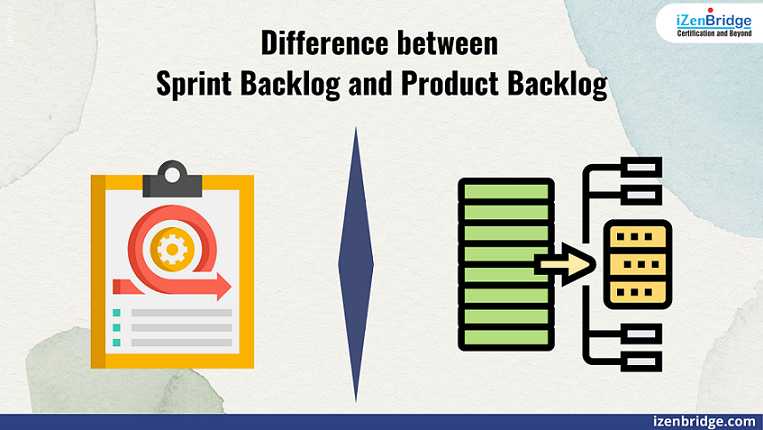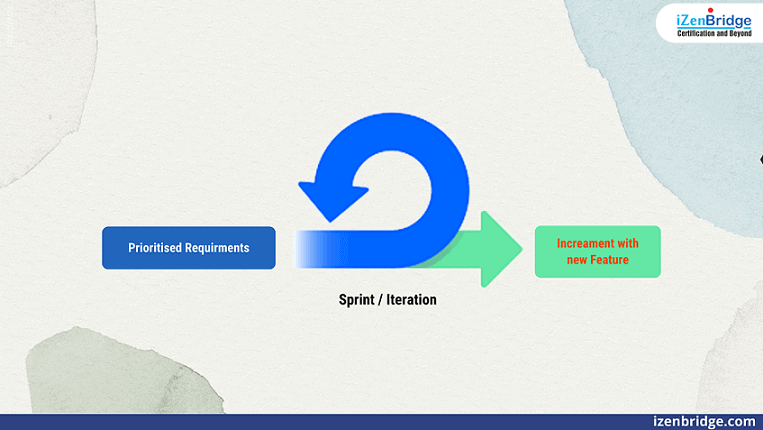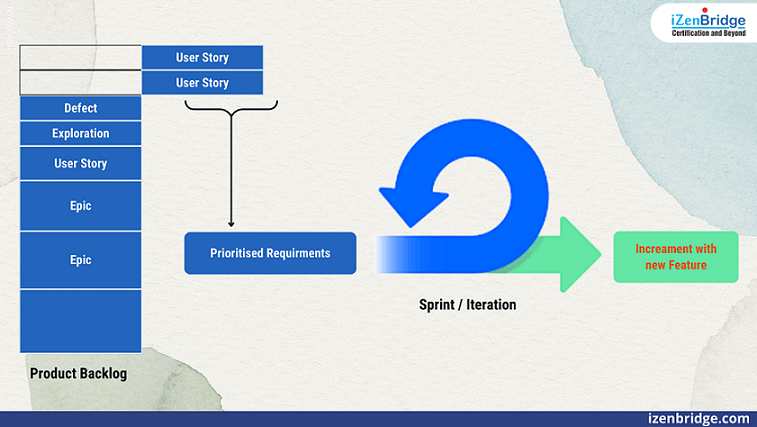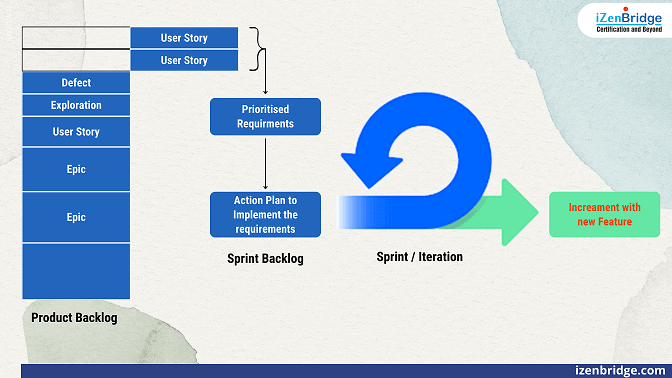

Agile ways of working have become increasingly popular in recent years, especially in project management. However, new terminology and jargon come with new frameworks, which can be confusing for those new to agile ways of working. In particular, the distinction between different types of backlog, such as the sprint backlog and the product backlog, can be challenging to understand.

Before we dive into the differences between these two types of backlog, let’s first look at what we mean by “sprint” or “iteration“. In agile working methods, we work in time boxes, fixed periods during which we focus on completing a specific set of requirements. These time boxes are often called sprints or iterations, typically lasting for two weeks. Working with Scrum involves prioritizing requirements that can be completed within a fixed timeframe. Instead of planning the entire project scope and determining a timeline, we maintain a flexible and evolving scope and set a fixed time for each sprint to determine what tasks can be accomplished within that timeframe. So in agile project progress as a series of Sprints.

During a sprint or iteration, our goal is to complete a specific set of requirements. These requirements are typically collected and organized into what is known as the product backlog. The product backlog is essentially a prioritized list of items that we want to develop as part of a product. This list evolves and becomes more defined over time as we work on developing the product. The product backlog is a dynamic document that includes various types of requirements, such as user, compliance, and technical requirements. Requirements that are expected to be delivered soon are detailed, while those that will be completed later, perhaps after two sprints, are defined at a higher level. The Product Owner conducts regular requirement refinement activities to ensure that upcoming requirements are well-refined using the latest information as we progress.

At the start of each sprint, it is crucial to determine how much work we can realistically accomplish during the fixed time frame. To achieve this, we must assess our capacity for the given sprint and evaluate the required tasks, necessary skills, dependencies, and estimations to develop a plan. This planning is accomplished during the Sprint Planning meeting, where the Product Owner presents prioritized product backlog items for development. The Scrum team examines these items and the Definition of Done guidelines for completing the work. Based on these factors and the team’s skills and capacity, a detailed plan for the current sprint is formulated, called the sprint backlog.
| Product Backlog | Sprint Backlog |
|---|---|
| A place to store envisioned requirements for the product | Holding area for the plan to achieve the Sprint Goal |
| Facilitate Incremental requirement exploration and refinement. | Facilitate the adaption of the plan to achieve the sprint goal. |
| Contain Items (usually User Stories) understood by the Business and Development team, giving a common language for the requirement. | Contain action in the technical language of the development team to implement the selected product backlog items in the Spring |
| Product Backlog gets initiated at the start of development and keeps getting updated throughout the development cycle—one product backlog for one product. | New Sprint Backlog gets created at the beginning of each Sprint, the sprint backlog related to one Sprint. |
| Product Backlog gets managed under the leadership of the Product Owner in consultation with stakeholders and the team. The activity to manage product backlog is called Backlog refinement. | Sprint Backlog gets created and managed under the leadership of the development team. It gets made in Sprint Planning and is managed frequently during the day. |
| The completed Product Backlog Items get tracked in Sprint / Iteration review meeting | The completed Sprint backlog items are discussed in Daily Scrum / Daily Standup Meeting. |
| Scrum Events / Meetings | Product Backlog | Sprint Backlog |
|---|---|---|
| Sprint Planning | Product Backlog Items selected for the upcoming Sprint get discussed. | Sprint backlog gets created based on Sprint Goal and Selected Product Backlog Items. |
| Daily Scrum | Some Product Backlog may get clarified. | Sprint backlog get updated and discussed. |
| Sprint Review | Stakeholder review the Done Increment having product backlog items selected in Sprint | Some challenging items of Sprint Backlog may get shared. |
| Sprint Retrospective | Less likely to get discussed | Challenging items of Sprint Backlog are likely to be discussed. |
This blog post aimed to clarify two important artifacts of the Scrum Framework: the Product Backlog and Sprint Backlog. If you have any additional comments or questions, please leave them in the comments section below. We also conduct regular sessions on Certified Scrum Master (CSM), where the complete Scrum framework is taught.
| Name | Date | Place | – |
| CSM Certification and Training | 5 – 6 July 2025 | Bangalore | More Details |
| CSM Certification and Training | 12 – 13 July 2025 | Pune | More Details |
| CSM Certification and Training | 21, 22 & 23 July 2025 | Delhi | More Details |